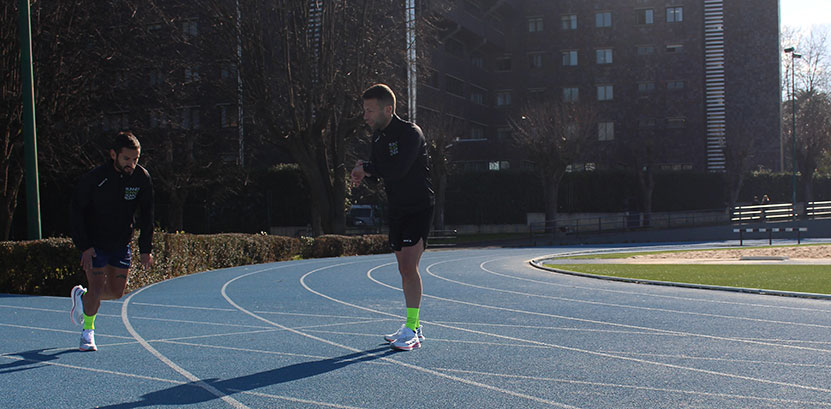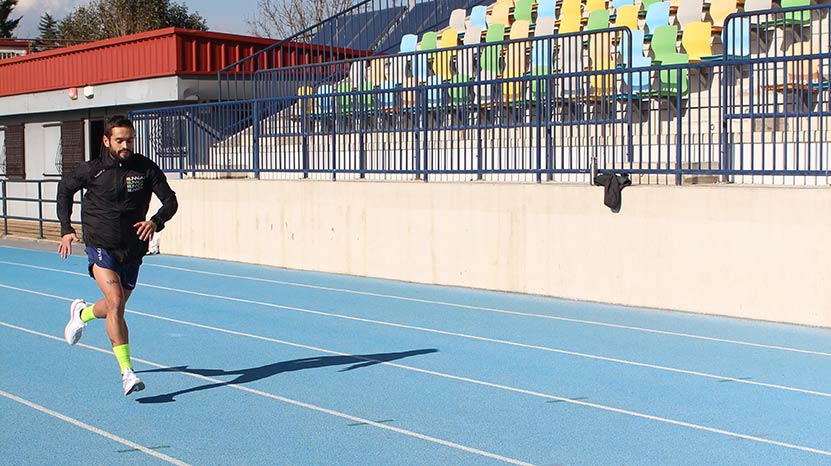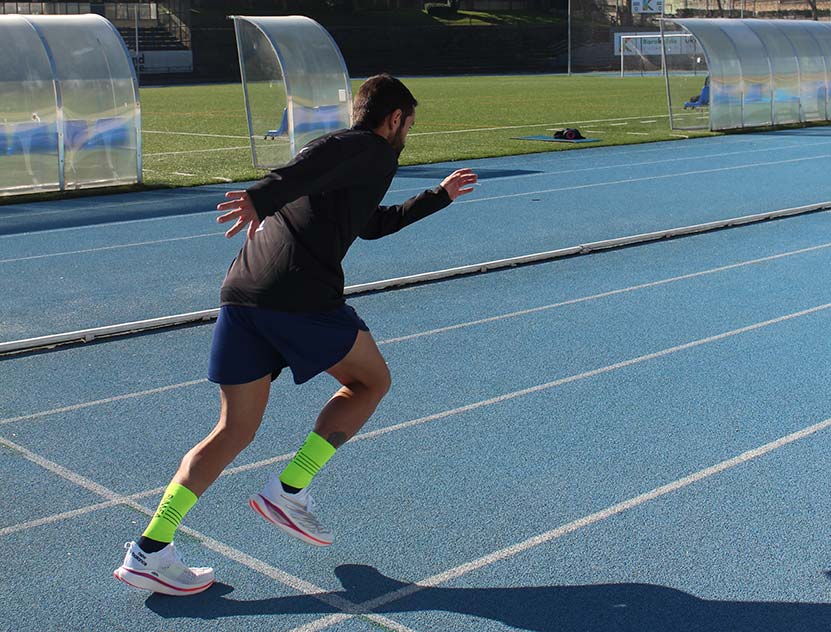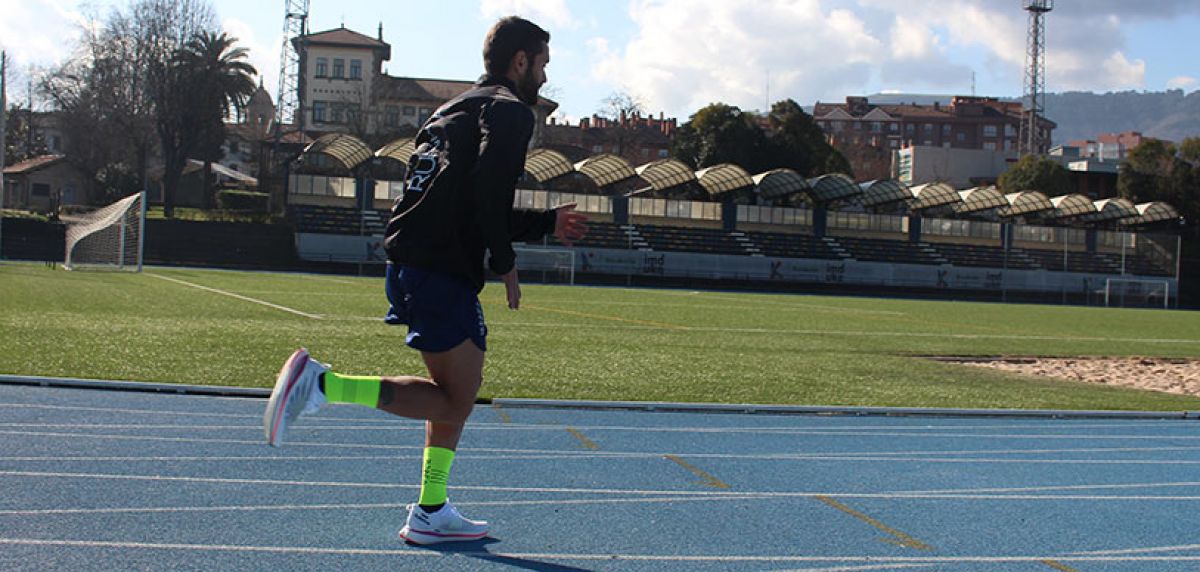At this point we believe that stopping to explain what fartlek consists of would be unnecessary, since it is a type of session that most runners have done and put into practice, both in a programmed and conscious way and involuntarily, on certain occasions. However, just to refresh your memory, fartlek is a Swedish term that means "speed game", so if you didn't know it until now, you can get an idea of how it is put into practice.
Basically, fartlek is as simple as going out for a workout in your running shoes and, usually, after a warm-up portion, performing a sequence of tempo changes at different intensities. The duration of each set of paces is something that is not stipulated and is left to the coach or the runner himself, although they are usually periods ranging from 10 seconds to 10 minutes in duration.
In every fartlek there is a part where you run at a higher intensity and another part where an active recovery takes place. But be careful, do not confuse it with an intervallic training of series, because although the sequence work/rest is executed in a similar way, there is a differential aspect; the intensity.

Fartlek is a specific training session for the improvement of resistance to fatigue. The peculiarity of this training method is that neither the high intensity parts are performed at maximum capacity, nor the recoveries are performed at very low intensity. So that we understand each other, the higher intensity running part has to allow us to do the recovery part at a very similar pace to that of a low intensity running session. Therefore, this makes it impossible for us to go at the maximum possible speed in the "strong" part. And if we do so, we will be performing the fartlek incorrectly.
How can I plan and design a fartlek?
As mentioned above, fartlek is a libre method in terms of durations, although it is recommended to design the changes of pace to stimulate intensities close to or above the anaerobic threshold. Thus, the most interesting is to plan relatively short periods of time, which can be several minutes or even composed of blocks of less than 60 seconds, depending on the athlete's ability , experience and the time of the season.
The somewhat anarchic structure of the fartlek allows us to give different approaches or forms to the rhythm game, so its usefulness is very broad and adaptable to all kinds of contexts. Among all the types of changes of pace, we can say that one of the most typical designs is the pyramid fartlek. Before starting with the explanation, we invite you to think of the shape of a pyramid, either the pyramid of Cheops or the pyramid of Guiza...
Pyramid Fartlek: what is it and how to do it?
As you may have imagined and visualized, the pyramid fartlek follows the shape of a pyramid to distribute the sequences of changes of pace. At the base, that is, at the beginning, we would find the blocks of longer duration, while as we move forward, that is, up the pyramid, the durations would decrease. As the duration of each change of pace decreases, understandably, the intensity increases, or in other words, the rhythm or speed tends to increase.

An example of a pyramid fartlek would be:
3min in Z4 / 3min in Z2 + 2min in Z4 / 2min in Z2 + 1min in Z4 / 1min in Z2 + 30sec in Z4 / 30sec Z2.
Of course we could also play with the recoveries, making it a bit more intense:
3min in Z4 / 1min in Z2 + 2min in Z4 / 1min in Z2 + 1min in Z4 / 1min in Z2 + 30sec in Z4 / 1min in Z2.
There are many options, both in terms of duration and the possibility of repeating the pyramid as many times as the runner can handle. Sometimes, the pyramid fartlek only occures at the first part of the fartlek. Since reaching the top of the pyramid there is the possibility to go back and return to the base, and then doing the sequence in the opposite way.
Following the first example shown, the continuation would be performed as follows:
3min in Z4 / 3min in Z2 + 2min in Z4 / 2min in Z2 + 1min in Z4 / 1min in Z2 + 30sec in Z4 / 30sec in Z2 + 1min in Z4 / 1min in Z2 + 2 min in Z4 / 2min in Z2 + 3min in Z4 / 3min in Z2.
There is also the possibility of designing an inverse pyramid fartlek, so that, contrary to the usual pyramid fartlek, the shortest sequences are performed first (higher intensity) to progressively increase the duration of each block of change of pace. As in the previous case, we could also perform the opposite sequence to return to the beginning.

Example of a reverse pyramid fartlek using the first example as a reference:
30sec in Z4 / 30sec in Z2 + 1min in Z4 / 1min in Z2 + 2min in Z4 / 2min in Z2 + 3min in Z4 / 3min in Z2.
Now, we do the opposite route to return to the starting point:
30sec in Z4 / 30sec in Z2 + 1min in Z4 / 1min in Z2 + 2min in Z4 / 2min in Z2 + 3min in Z4/ 3min in Z2 +2min in Z4 / 2min in Z2 + 1min in Z4 / 1min in Z2 + 30sec in Z4/ 30sec.
The difference between the pyramid fartlek and the inverse pyramid fartlek is that the runner starts in a more "relaxed" way and increases in intensity with some fatigue in the legs. The second, on the other hand, starts in an intense way and then support the lack of energy in the blocks of longer duration.
A well-done fartlek is always a total success.
Whether in pyramid, reverse pyramid, one-way or round-trip form, the fartlek will always be a highly recommended training method. A type of session that will help us to improve our fatigue tolerance and pace management and will work perfectly at any time of the season, but we recommend that you put it into practice, especially at the beginning of the season, being a stepping stone to the higher intensity training, such as the series. What are you waiting for to put it into practice?
Read more news about: Running Training




































